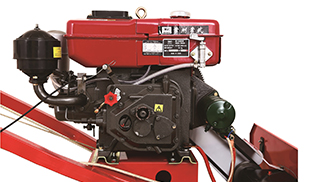Aug . 29, 2024 03:33 Back to list
High-Quality Rear Brake Drums for Optimal Braking Performance
Understanding Rear Brake Drums Key Components and Maintenance
When it comes to automotive braking systems, the rear brake drum plays a crucial role in ensuring safety and performance. Although often overshadowed by disc brakes, especially in modern vehicles, brake drums are a staple in many cars, particularly those with rear drum brakes. This article explores the functions, components, and maintenance of rear brake drums to help drivers understand their importance.
What is a Brake Drum?
A brake drum is a cylindrical component that houses the braking mechanism. When the brake pedal is pressed, hydraulic pressure activates the brake shoes inside the drum, pressing them against the drum's inner surface to create friction. This friction slows down the wheel, thereby bringing the vehicle to a stop. Rear brake drums are essential for vehicles where weight distribution and braking force must be balanced; they help stabilize the car during braking.
Key Components of Rear Brake Drums
1. Brake Drum The main part of the system, made of cast iron or aluminum, designed to withstand high temperatures and wear. Its surface is usually smooth and can be machined to restore proper contact with the brake shoes.
2. Brake Shoes Curved components lined with friction material on one side. When the brake is engaged, the shoes expand outward against the inside of the drum, creating the necessary friction.
3. Wheel Cylinder Situated at the rear of the brake shoes, this hydraulic cylinder contains pistons that push the brake shoes apart. When brake fluid is applied, these pistons move outward, forcing the shoes against the drum.
4. Adjuster An automatic mechanism that keeps the brake shoes at the appropriate distance from the drum. It compensates for wear and maintains effective braking performance.
5. Return Spring Springs that pull the brake shoes back to their resting position after the brake pedal is released, ensuring they do not drag against the drum.
brake drum rear

Maintenance of Rear Brake Drums
To ensure optimal braking performance and prolong the life of the brake system, regular maintenance of rear brake drums is essential. Here are some maintenance tips
1. Regular Inspections Periodically check the brake drums for signs of wear, such as deep grooves or cracks. Inspect the brake shoes for adequate friction material.
2. Cleaning Dirt and debris can accumulate inside the drum and on the shoes, affecting performance. Cleaning these components can help maintain smooth operation.
3. Adjustment If you notice reduced braking efficiency, it may be time to adjust the brake shoes. This can often be done through an access hole in the drum.
4. Replacing Components When brakes start to show significant wear, replace the brake shoes and potentially the drum itself. This prevents complete failure and ensures safety.
5. Professional Servicing Regular professional inspections can catch potential issues before they become serious problems. Mechanics can also perform necessary adjustments and replacements.
Conclusion
Rear brake drums may not always get the attention they deserve, but they are vital for the safe operation of many vehicles. Understanding their components and the importance of regular maintenance can help drivers ensure their braking system functions efficiently and effectively. Regular care of your rear brake drums not only extends the life of your vehicle's braking system but also provides peace of mind on the road. Always consult your vehicle's manual and a professional mechanic for specific maintenance guidelines and recommendations.
-
Volvo Brake Drum: OEM Quality, Optimal Safety
NewsAug.27,2025
-
Durable Brake Drum MAZ for Heavy Duty Trucks | High Performance
NewsAug.26,2025
-
FUWA: Premium Quality, Reliable Performance & Innovative Solutions
NewsAug.25,2025
-
Liza Brake Drum: Superior Quality & Performance for Safe Driving
NewsAug.24,2025
-
Iveco Brake Drum | Premium OE Quality for Daily & Eurocargo
NewsAug.22,2025
-
Your Brake Drum Man: Quality & Performance Parts
NewsAug.21,2025
